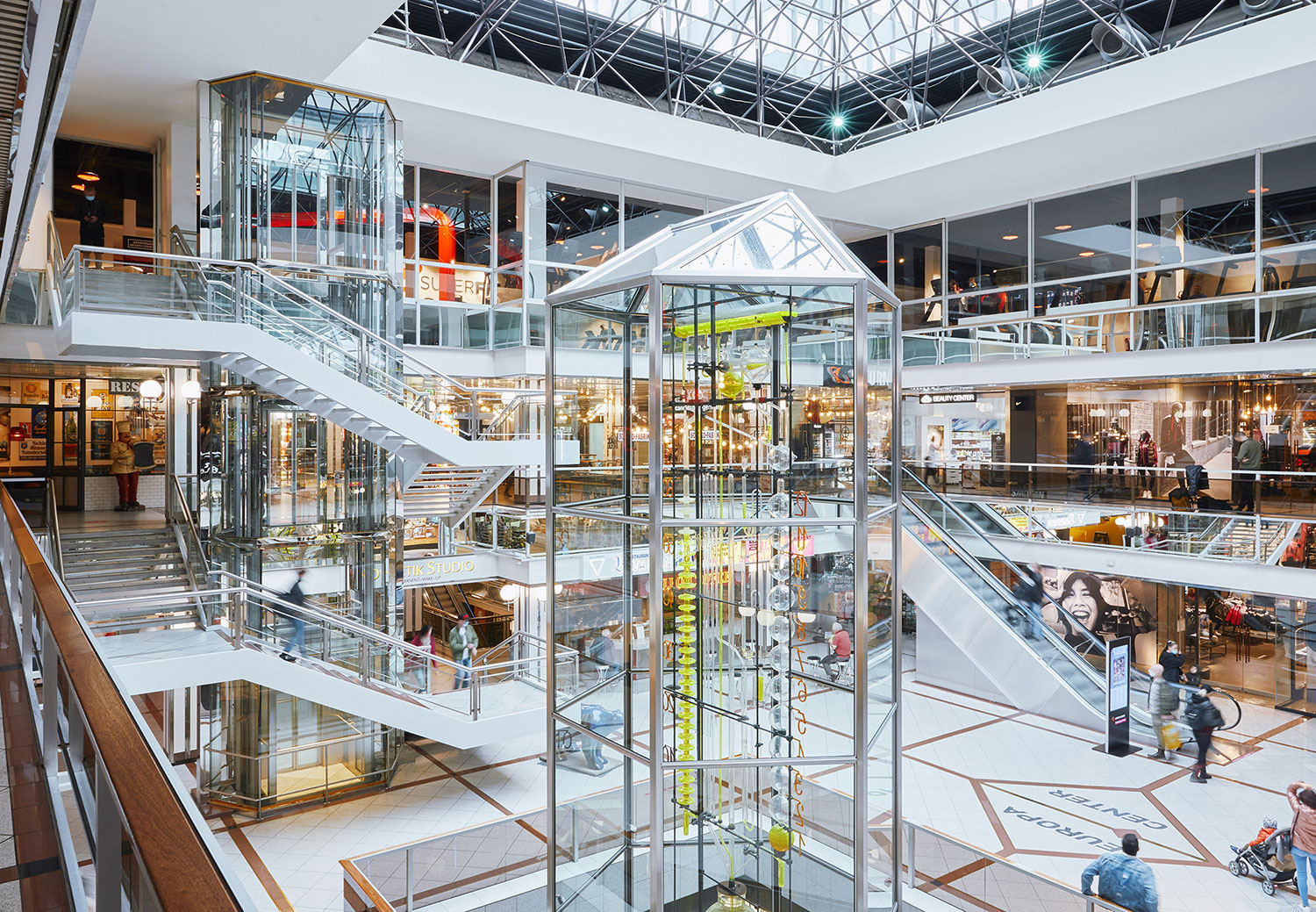A violinist plays on the pavement — surrounded by passers-by. Meanwhile, the flagship stores of Adidas, Nike, Sketchers and JD Sports, to name just a few, are buzzing with activity. Together with Tauentzienstraße, Boulevard Ku’damm is the brand shop window of the world. Special shop concepts and a wide range of extravagant offerings make shopping here an unforgettable experience. Exclusive, limited edition items, such as the coolest trainers of the year, often result in long queues even before the shops open.
The boulevard combines exclusivity with accessibility, haute couture with everyday fashion, and tradition with modernity. The Ku’damm performs this balancing act effortlessly. The blend of restaurants, cafes, entertainment and shopping attracts not only the locals but also visitors from all over the world. The boulevard is 3.6 kilometres long, stretching from Rathenauplatz in the west to the Gedächtniskirche in Breitscheidplatz. There, it connects to Tauentzienstraße, which extends the boulevard all the way to Wittenbergplatz.
THE BOULEVARD
WITH INTERNATIONAL FLAIR.

For many brands, it is an absolute must to have a flagship store on Germany’s most popular experience-oriented boulevard. But the Ku’damm, which features some monumental buildings, has yet another defining feature: Unlike the centres of many other metropolises, which become deserted in the evening, this boulevard in Berlin, together with its side streets, remains a lively residential area even once the working day is done, thanks to its many restaurants, bars and cultural institutions.
The attractive 19th century architecture and post-war buildings alike have become established as sought-after residential addresses. Even the imposing corner buildings on the squares and at junctions house a variety of mostly exclusive flats as well as offices. Here, the fun continues after the close of business.
From the Kurfürst’s bridal path to the Kurfürstendamm
To examine the history of the boulevard, we must go back to the 16th century. What is now known as the Kurfürstendamm was initially a “corduroy road”. The bridle path made of logs connected the Berlin Palace to Grunewald Hunting Lodge, which was built by the Kurfürst (elector [German prince]). In around 1883, the “Kurfürstendamm-Gesellschaft”, a stock corporation formed by private business people, began to expand the path into a road. The corporation, which dealt with the buying and selling of land, received a purchase option on a 234-hectare site in Grunewald from the state. There, the corporation built the Villenkolonie Grunewald (Grunewald Villa Colony), which was connected to the city via the Kurfürstendamm. 5th May 1886 saw the inauguration of the steam railway, which ran from the Zoological Garden to Halensee, via the Kurfürstendamm. This is considered the date when the boulevard was truly born. Accordingly, the 125th birthday of the Ku’damm was celebrated in 2011.
The width of the Kurfürstendamm was extended to 53 metres at the instigation of Otto von Bismarck during his rule as German chancellor. The inspiration was Paris’ Champs-Élysées.However, the growing population numbers in Berlin following the formation of the German Empire in 1871 also made it desirable to broaden the road. The 53 metres determined as the distance between the rows of houses on the Kurfürstendamm were initially divided up into 7.5 metres for front gardens and 4 metres for pavements on both sides of the road, with a 10-metre-wide traffic lane in each direction. In addition, there was also a 10-metre-wide bridle path on the central promenade. Of course, the distance between the rows of houses remains, but the pavements are now 13 metres wide on each side and the traffic lanes and central reservation are each 9 metres wide.
Until the fall of the Berlin Wall, the Kurfürstendamm was the centre of West Berlin and the “shop window of the western world”. After German reunification, in reunified Berlin, the focus shifted back to the historical centre, in the east of the city. The Ku’damm had to “reinvent” itself, in a sense.
Exclusive fashion brands opened branches between Uhlandstraße and Adenauerplatz. The two high-rise buildings near the Gedächtniskirche, which are almost 120 metres tall, and other new buildings increased the height of the silhouette of City West. The dynamic development of the entire Ku’damm and Tauentzien district is in full swing. The boulevard is now developing into an experience-oriented boulevard with international flair.
THE LEGEND
LIVES ON.

The existence of the “Kurfürstendamm legend” is largely down to the boulevard’s history, but is also linked to the unique atmosphere of effortlessness and enjoyment, creativity and innovation, glamour and carefreeness that radiates from the world-renowned boulevard. Restaurants, cafes and bars based on a whole host of different, unusual concepts can be found on the boulevard, and especially its side streets. In addition to their unparalleled quality, these establishments offer a feeling of urban exclusivity.
The boulevard’s cultural beacon is the Schaubühne theatre. And when the Ku’damm theatres return from their interim venue to the new theatre being constructed on the Ku’damm, the boulevard will once again have a high-quality boulevard theatre.
Events such as the Love Parade, which first took place on the Kurfürstendamm on 1st July 1989, and the Christmas illuminations, whose glowing lights have been delighting locals and visitors to the city every year since 1978, are further examples of the many different activities that continually revitalise the boulevard. The traders and service providers on the Kurfürstendamm quickly learnt to move with the times and ensure that change is the only constant, thereby continuing the success of the famous boulevard. By joining forces, they continue to develop the “Kurfürstendamm legend”, not only in their own interests, but also for the benefit of the city as a whole.








